The canine and feline urinary system
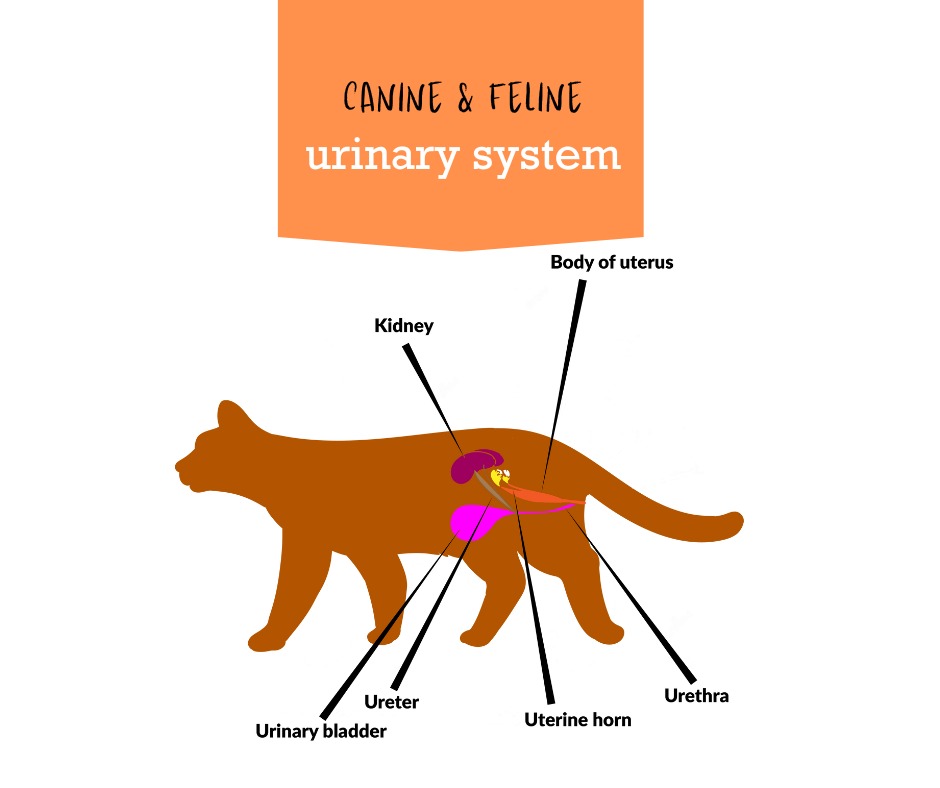
In this article, we list the organs and functions of the canine and feline urinary system, the disorders that can affect the urinary system, and how the vet diagnoses your pet's urinary health.
The primary function of the canine and feline urinary system is to excrete waste products from the body. Therefore, the health of the urinary system is critical for the health of all of the body’s other systems. Understanding and maintaining your pet’s urinary system is essential to their overall health. In this article, we’ll cover the organs and functions of the urinary system, as well as the common diseases of the urinary system (and their symptoms) and how the vet can diagnose them.
The canine and feline endocrine system

In this article, we list the glands of the endocrine system of dogs and cats, as well as their functions, and what happens when pets develop endocrine disorders.
The endocrine system of dogs and cats is almost identical to that of humans, in structure and function. The endocrine system is made up of a number of glands in the body that secrete hormones to control a range of important functions – from growth and metabolism, to reproduction, blood pressure, mineral balance and homeostasis in the body. Its overall purpose is the regulation and control of various functions to keep the body in balance. The canine or feline body is in a constant state of detecting stimuli (threats, thirst, reproductive opportunity, hunger, temperature, etc.). It is the endocrine system that responds to those external stimuli in ways that keep the body in balance.
The canine and feline immune system

The canine and feline immune system affects each and every system and cell in their body. It is a barrier of detection and elimination that stands narrowly between the healthy cells of the body and invading organisms like viruses, bacteria, parasites, can
The immune system of dogs and cats
The canine and feline immune system affects each and every system and cell in their body. It is a barrier of detection and elimination that stands narrowly between the healthy cells of the body and invading organisms like viruses, bacteria, parasites, cancer cells, pollen or food molecules. The immune system is the body’s defence against illness, disease, infection and allergies, and it has a few mechanisms of protection against pathogens that may attack a healthy animal.
Canine and feline male reproductive system

In this article, we list the organs and functions of the male reproductive system in dogs and cats, the disorders that can affect the reproductive organs
In our previous article on the female reproductive system of dogs and cats, we showed how a complex system of reproductive organs and hormones work together to facilitate fertilisation, gestation and birth. The male reproductive system in dogs and tomcats also consists of a variety of organs and hormones that work together to facilitate fertilisation and to ensure the perpetuation of the species. It influences many of the males’ behaviours, making a good case for neutering when owners of male dogs and cats do not intend to breed with their pets.
Canine and feline female reproductive system

In this article, we explain the components and functions of the female reproductive system, the disorders that can affect reproductive organs, and how the vet treats the reproductive health of female dogs and cats.
Dogs and cats are placental mammals that carry their foetuses in the uterus to full term, giving birth to a litter of live offspring that are almost fully developed. Offspring are initially fed on milk secreted by the bitch or queen’s mammary glands, with puppies and kittens suckling on the five or four pairs of teats, respectively.
The reproduction process requires a number of different organs, hormones and events that all work together in a system, to produce puppies and kittens. In this article, we’ll explore the components and functions of the female reproductive system, the disorders that can affect reproduction, and what to look out for when problems affect the reproductive organs.
Canine and feline musculoskeletal system

In this article, we'll explore the components of the musculoskeletal system, its various functions, and what happens when things go wrong. We'll also give you some tips on how to protect and your pet's musculoskeletal system from young to old.
The musculoskeletal system of dogs and cats is a complex, multi-part, multi-functioning system that gives animals their shape, size, health, flexibility and speed. It can be fed and protected to turn a dog or cat into a biological machine… or it can become painfully dysfunctional, affecting their health and quality of life.
The canine and feline lymphatic system

In this article, we’ll explore what the lymphatic system does, the organs of the lymphatic system and where they are located, and what happens when there is a malfunction or disorder in the lymphatic system or any of the lymphatic organs.
The lymphatic system is one of the lesser talked-about, but equally important systems in your pet’s body. It works alongside the circulatory function of the cardiovascular system, the elimination function of the digestive system and the defence function of the immune system. There are several important organs in your pet’s body that make up the lymphatic system and its network of vessels, ducts, lymphatic fluid, lymphocytes and lymph nodes.
The canine and feline cardiovascular system

In this article, we'll explore the organs of the cardiovascular system, its function and how it works, as well as problems that arise in the cardiovascular system and how they affect our pets.
The cardiovascular system comprises the heart (cardio) and veins (vascular) that pump and transport oxygenated and deoxygenated blood throughout the body. While the respiratory system is responsible for bringing oxygen into- and carrying carbon dioxide out of the blood, it’s the heart and veins that circulate the oxygen throughout the body. Just like humans, dogs’ and cats’ cardiovascular system performs the same function, is also controlled by the autonomic nervous system and is also susceptible to disorder and disease.
The respiratory system of dogs and cats
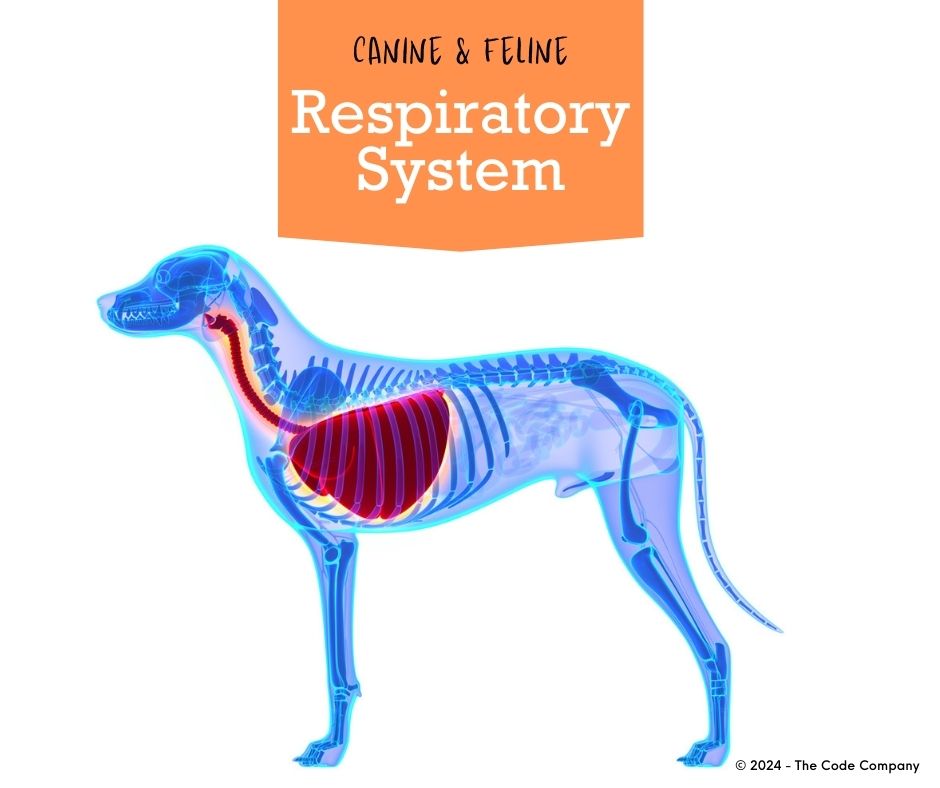
Breathing is an essential function of life, but it is just one function of the respiratory system in our pets. The respiratory system brings air into your dog or cat’s body, humidifies that life-giving air, heats it up and filters it, and then uses the
Breathing is an essential function of life, but it is just one function of the respiratory system in our pets. The respiratory system brings air into your dog or cat’s body, humidifies that life-giving air, heats it up and filters it, and then uses the components of that air to energise cells and balance the body’s pH levels. It then removes the resultant waste products. All of this is done involuntarily – your pet doesn’t have to think about breathing; it just happens.
Nervous system
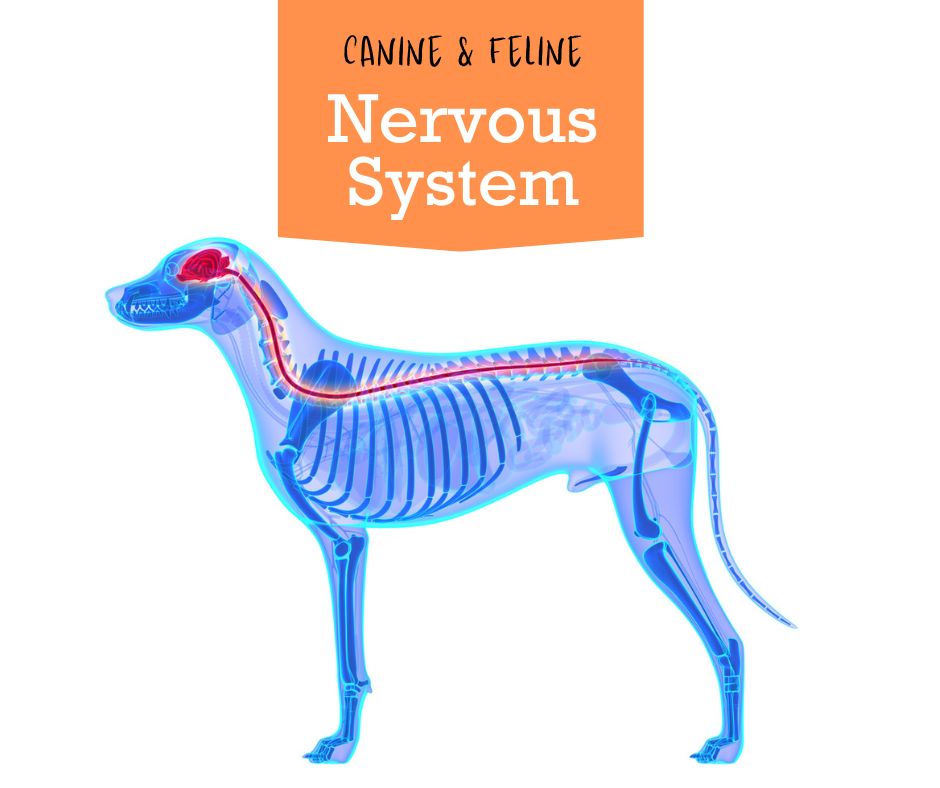
The canine and feline nervous system
As we explore the bodily systems of our furry and purry friends, there is one system without which all the others would not be able to function: the nervous system. The nervous system consists of the brain, spinal cord and all the nerves and connective tissue that runs between them and the rest of the body’s organs. Think of the nervous system not only as the electrical wiring that powers the house, but with its own power source and smart system – the brain – that maintains equilibrium in every room.
The canine skin and coat
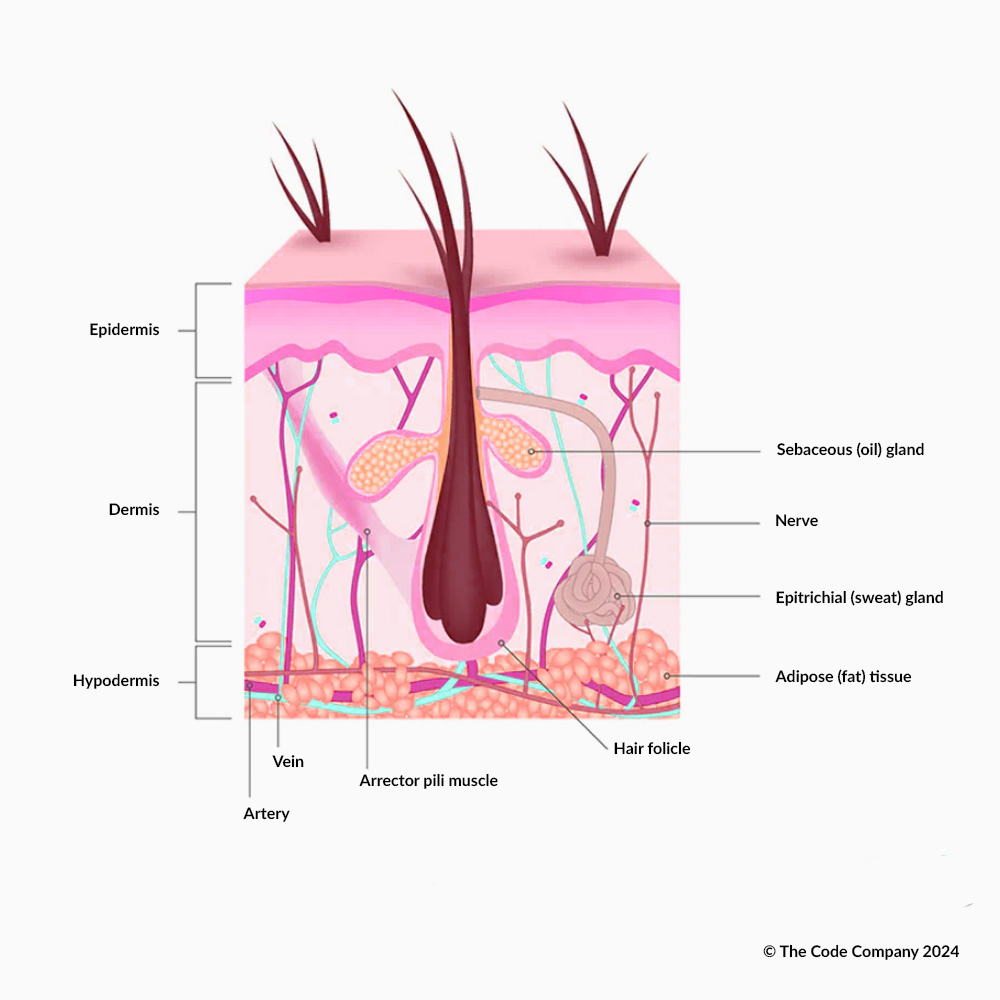
Your dog's skin and coat
Your dog’s skin and coat make up a multi-functional super system. They are a barrier of protection, a convenient thermostat and water meter, as much as they are a barometer of your dog’s internal health. Your dog’s skin and coat also function as his largest sensory organ, as well as a very important communication tool.
In this article, we’ll explore the structure and function of the canine skin and coat. We’ll suggest ways to keep your dog’s skin and coat healthy, discuss the symptoms of an unhealthy skin and coat, issues that may arise and when to see the veterinarian as a result.
The feline skin and coat
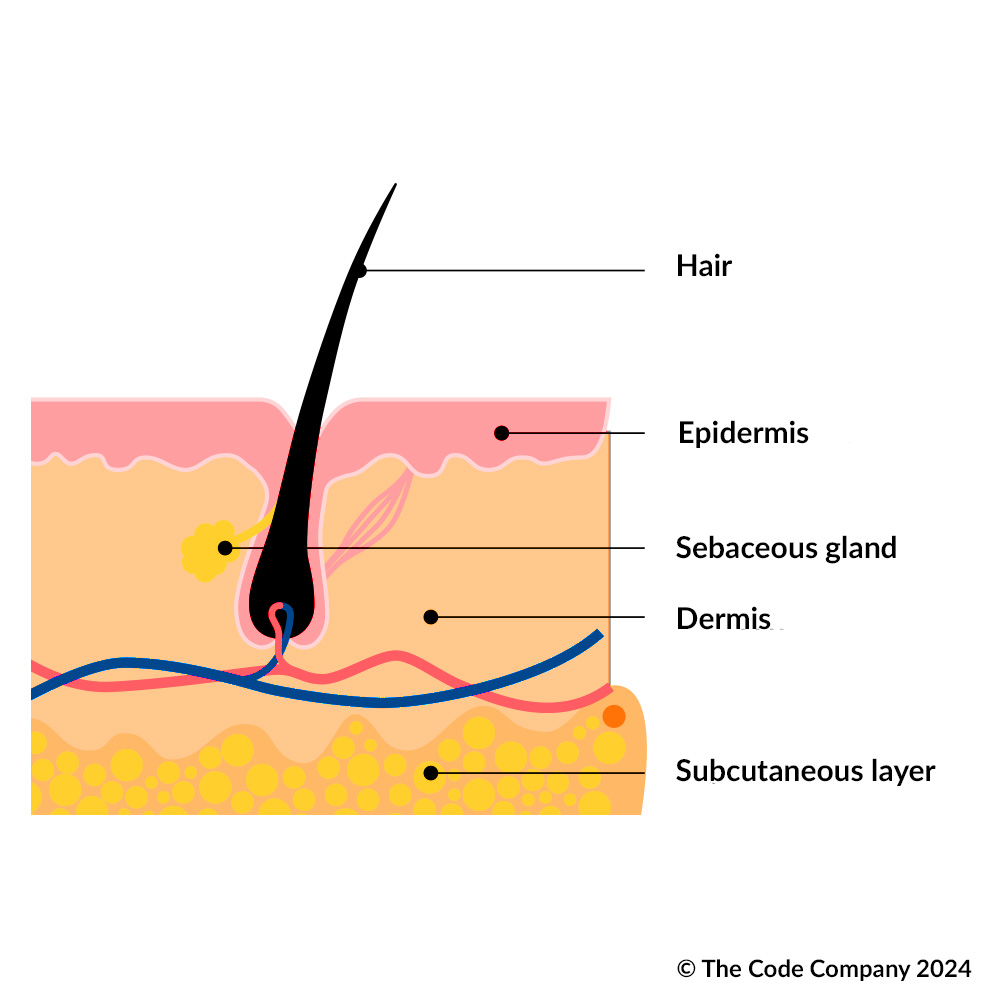
Your cat's skin and coat system
Your cat’s skin and coat make up a multi-functional super system. They are a barrier of protection, a convenient thermostat and water meter, as much as they are a barometer of your cat’s internal health. Your cat’s skin and coat also function as her largest sensory organ, as well as a very important communication tool.
In this article, we’ll explore the structure and function of the feline skin and coat. We’ll suggest ways to keep your cat’s skin and coat healthy, discuss the symptoms of an unhealthy skin and coat, issues that may arise and when to see the veterinarian as a result.
The feline digestive system
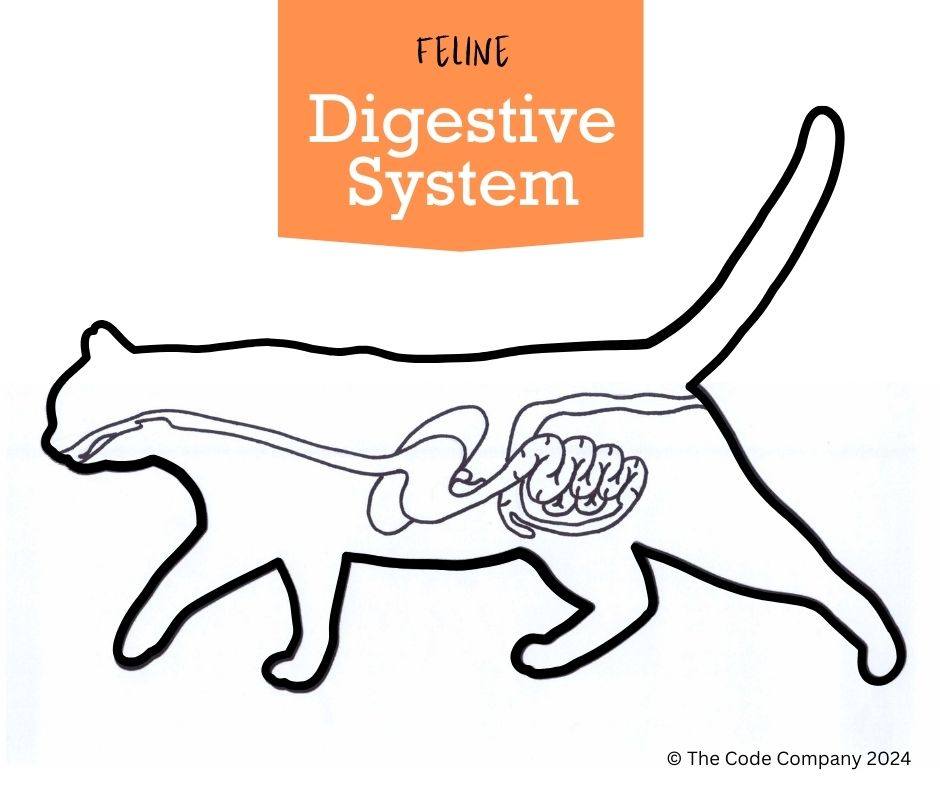
Your cat's digestive system
The feline digestive system is similar in form and function to the canine digestive system. However, there are some differences in their diet that account for variances in how they absorb and use energy, and how long their digestive process takes.
Cats are obligate carnivores, which means that in order to survive, they need a diet that is primarily made up of meat. They can eat carbs and fats, but their health will deteriorate if they don’t get enough animal proteins to maintain their energy, lean muscle, tendons and ligaments, fur, skin, nails, hormonal balance and many other body organs and systems. Despite around 10,000 years of domestication, there is little that has changed in their protein-dominant diet. Therefore, their digestive system is primed to ingest, digest, absorb and eliminate based on a meat-based diet.
The canine digestive system
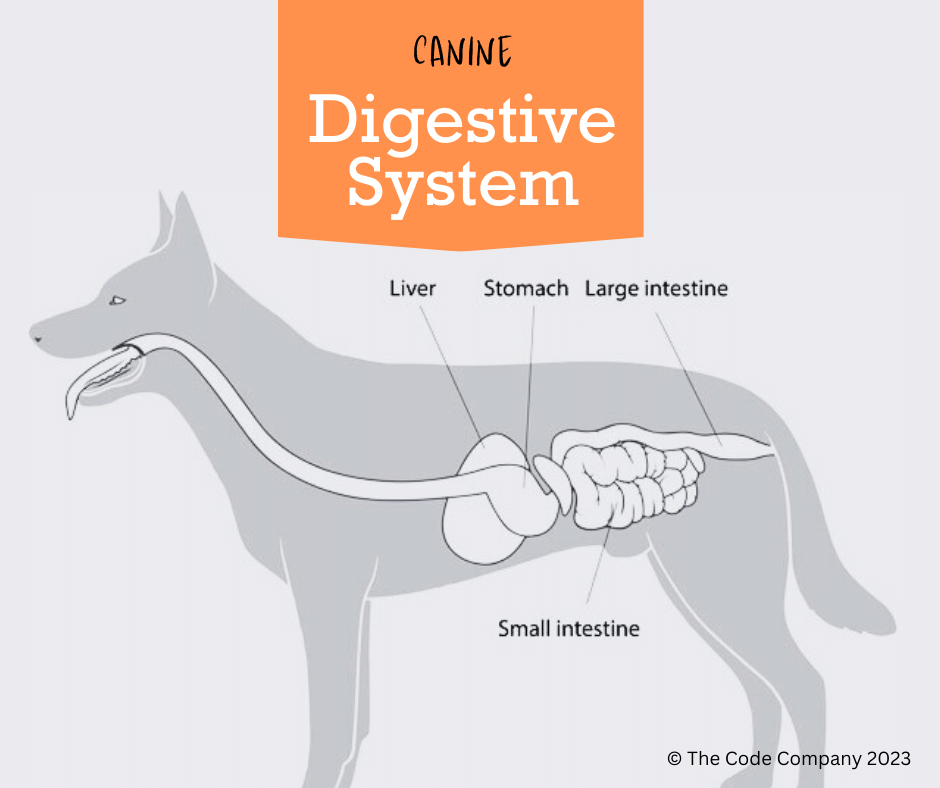
Your dog's digestive system
Dogs require not only high-quality food, but – equally importantly – healthy digestion in order to absorb the maximum amount of goodness from their nutrition. Let’s take a closer look at your dog’s digestive system: the organs it’s made up of, how it works, how you can help your dog’s digestive system to remain healthy, the issues that could arise, and when to see the vet about your dog’s digestive system.
Your pets and the holidays

It's almost time for the holidays, which can really put a spoke in my pets' routine. What should I do?
Silly season has arrived, which means the end of the year is in sight. Some of you will be going away on holiday, some will have friends and family over to visit, while others may take time off work, stay in and get some much-needed ‘me-time’. Whatever your plans are for the holidays, they spell a change for your pet/s.
In this article, we offer a friendly reminder to be mindful of how the holidays may affect your pet’s emotional and physical wellbeing, and what you can do about it.
